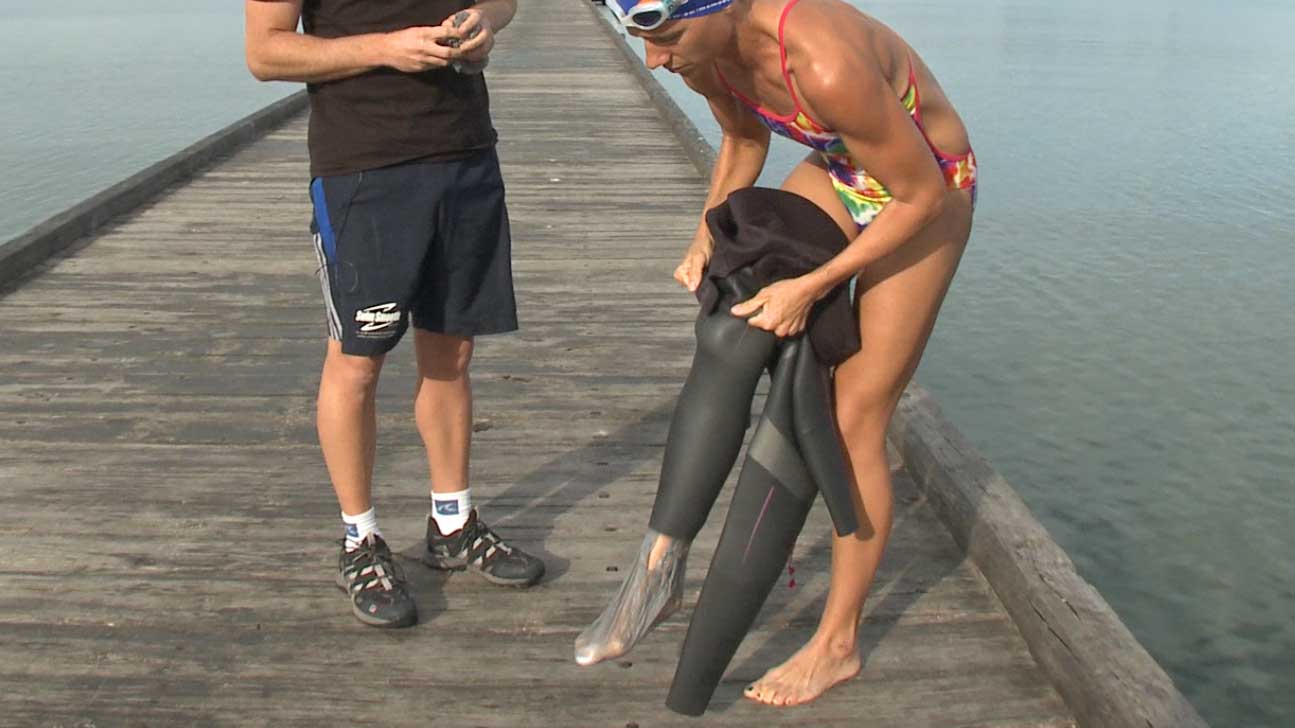Triathletes from 15 different states prepare for Kerrville Triathlon, the most scenic triathlon in Texas
High Five Events concludes their 2018 triathlon season with the Kerrville Triathlon Festival. The event will take place on Saturday, Sept. 29 and Sunday, Sept. 30, in Kerrville, Texas. More than 1300 athletes will participate in this beloved Hill Country event. Entering its eighth year, Kerrville Tri is rapidly becoming known for featuring the most scenic triathlon course in Texas.
Triathletes will participate on a course highlighted by swimming in Nimitz Lake, cycling through the Texas Hill Country, and running along the Guadalupe River. After crossing the finish line, participants can grab an inner tube provided by the event and float in the cool waters of the Guadalupe River. Before the action begins, participants and their friends and family are invited to the ROKA Happy Hour. This gathering will take place on Friday, Sept. 28th, from 7:30 p.m. – 8:30 at the Inn of the Hills bar.
“People are buzzing about the 8th Annual Kerrville Triathlon Festival because it combines triathlon distances for everyone, the City of Kerrville’s hospitality, and the beauty of the Texas Hill Country,” said Stacy Keese, co-owner of High Five Events. “We’re just as excited as the City of Kerrville to host triathletes from 15 different states and see the continued growth of this event.”
Swim, bike, run in the Texas Hill Country
The Kerrville Triathlon Festival will feature the Debra Zapata Sprint distance, sprint relay, and free Kids Fun Run on Saturday. Quarter distance, quarter aquabike, half distance, half aquabike, and half relay will all take place on Sunday. The sprint will begin at 7:30 a.m. on Saturday. The half will begin at 7:30 a.m. on Sunday. Triathletes who would like to participate but are unable to travel to Kerrville can register for the virtual Kerrville Triathlon.
Participants can pick up their packet at the Kerrville Triathlon Expo and Packet Pickup. That will take place at the host hotel, Inn of the Hills. The expo and packet pickup, which is free and open to the public, will take place on Friday, Sept. 28th, and Saturday, Sept. 29th. Registration for all distances is still open for the Kerrville Triathlon Festival. Volunteer positions are available as well.
Athletes will receive custom-designed shirts and trucker hats, water bottles, ROKA swim caps, beer, belt buckle finisher’s medal, a post-race meal including fajitas and tacos from H-E-B, fruit, snacks, and an opportunity to float in the Guadalupe River. Professional timing and photography, a great volunteer crew, hundreds of supportive spectators, and an electric finish line festival will showcase why the Kerrville Triathlon is one of the best triathlons in Texas.
The Kerrville Triathlon would like to thank sponsors H-E-B, ROKA, Clif Bar, City Limit Cycles, the City of Kerrville, Kerrville Convention and Visitors Bureau, Peterson Health, Jack and Adam’s Fredericksburg, Ben Phillips, Real Estate Advisor for Engel and Volkers Austin, SPIbelt, Peak Fitness, MO-RANCH, Hill Country Bicycle Works, Grape Juice, RunLab Austin, and Gatorade.



 8. The wetsuit should feel tight around your neck causing the wetsuit to move with the neck. If your neck moves freely inside of the wetsuit, readjust the collar. If you choose to use lubrication products, make sure it is a non-petroleum based lubricant.
8. The wetsuit should feel tight around your neck causing the wetsuit to move with the neck. If your neck moves freely inside of the wetsuit, readjust the collar. If you choose to use lubrication products, make sure it is a non-petroleum based lubricant.



